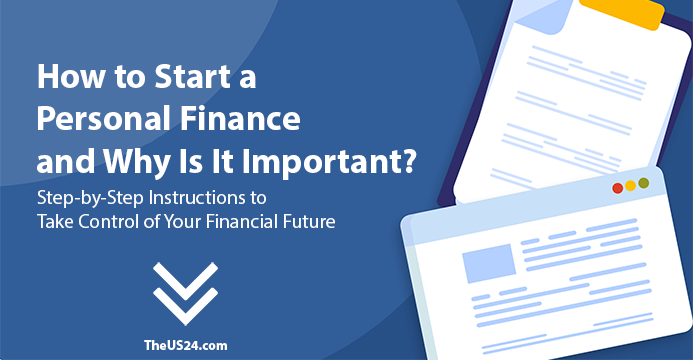Taking control of your finances doesn’t have to be overwhelming. With the right steps, anyone can build a strong financial foundation. This guide breaks down personal finance basics—budgeting, saving, investing, and more—to help you start in 2025. Let’s get started!
Step 1: Assess Your Financial Situation
Before improving your finances, understand your current position. Think of it as a financial snapshot.
- Income: Calculate your monthly take-home pay (after taxes) from jobs or side hustles.
- Expenses: List fixed costs (rent, utilities) and variable costs (groceries, dining).
- Debts: Sum up credit card balances, student loans, or other debts.
- Savings: Check your bank account balances.
Time Needed: 30-60 minutes
Tip: Use apps like Chime or bank statements to track spending.
Why It Matters: Knowing your finances helps you identify areas to improve.
Step 2: Set Smart Financial Goals
Goals give your money purpose. Define what you want to achieve to stay motivated.
- Short-Term (1-2 years): Save $1,000 for a vacation or pay off a credit card.
- Medium-Term (3-5 years): Build a $5,000 emergency fund or save for a car.
- Long-Term (10+ years): Plan for retirement or a home purchase.
How to Do It: Write specific goals, e.g., “Save $500 by December 2025.”
Time Needed: 15-30 minutes
Tip: Focus on one exciting goal to maintain momentum.
Why It Matters: Clear goals make every dollar count.
Step 3: Build a Budget That Works
A budget guides your spending and saving, ensuring you hit your goals.
Try the 50/30/20 Rule:
- 50% for needs (rent, groceries).
- 30% for wants (entertainment, dining out).
- 20% for savings and debt repayment.
How to Do It: Use tools like Mint or a spreadsheet. Input income and expenses from Step 1.
Time Needed: 1-2 hours to set up, 10 minutes monthly to adjust.
Tip: Keep some fun in your budget to stick with it.
Why It Matters: Budgeting prevents overspending and boosts savings.
Step 4: Start an Emergency Fund
An emergency fund protects you from unexpected expenses, like car repairs.
Goal: Save $500-$1,000 initially, then aim for 3-6 months of expenses.
How to Do It: Open a high-yield savings account (e.g., Ally, 4-5% interest in 2025). Auto-transfer $25-$50 per paycheck.
Time Needed: 15 minutes to set up, ongoing to save.
Tip: Treat savings like a bill—prioritize it.
Why It Matters: It keeps you debt-free during emergencies.
Step 5: Tackle Debt Strategically
Paying off debt frees up money for your goals.
Methods:
- Debt Snowball: Clear smallest debts first for quick wins.
- Debt Avalanche: Target high-interest debts to save money.
How to Do It: List debts, pay minimums, and focus extra payments on one debt. Negotiate rates with creditors.
Time Needed: 30 minutes to plan, ongoing to pay.
Tip: Use bonuses or tax refunds to accelerate payments.
Why It Matters: Less debt means more financial freedom.
Step 6: Save and Invest for Growth
Once debt is manageable, grow your wealth through saving and investing.
Options:
- Saving: Add to your emergency fund or short-term goals.
- Investing: Start with $5-$50 in index funds (e.g., Vanguard’s VOO) via Fidelity.
How to Do It: Set up auto-transfers to savings and open an investment account.
Time Needed: 1 hour to set up, 5 minutes monthly to monitor.
Tip: Take advantage of 401(k) employer matches—it’s free money.
Why It Matters: Investing builds long-term wealth.
Step 7: Protect Your Finances
Safeguard your progress with insurance and planning.
Essentials:
- Health insurance (via Healthcare.gov).
- Renters or auto insurance (check Lemonade).
- A basic will (use FreeWill).
Time Needed: 1-2 hours to research and enroll.
Tip: Bundle insurance for discounts.
Why It Matters: Protection prevents financial setbacks.
Step 8: Stay Educated and Adapt
Personal finance evolves—keep learning to stay ahead.
Resources:
- Books: The Total Money Makeover by Dave Ramsey.
- Blogs: NerdWallet.
- Podcasts: ChooseFI.
How to Do It: Spend 15-30 minutes weekly learning. Review your budget monthly.
Tip: Celebrate milestones, like paying off a debt, to stay motivated.
Why It Matters: Knowledge ensures you adapt to life changes.
Take Action Today
Start with one step—check your bank account or set a goal. Small actions lead to big results.

